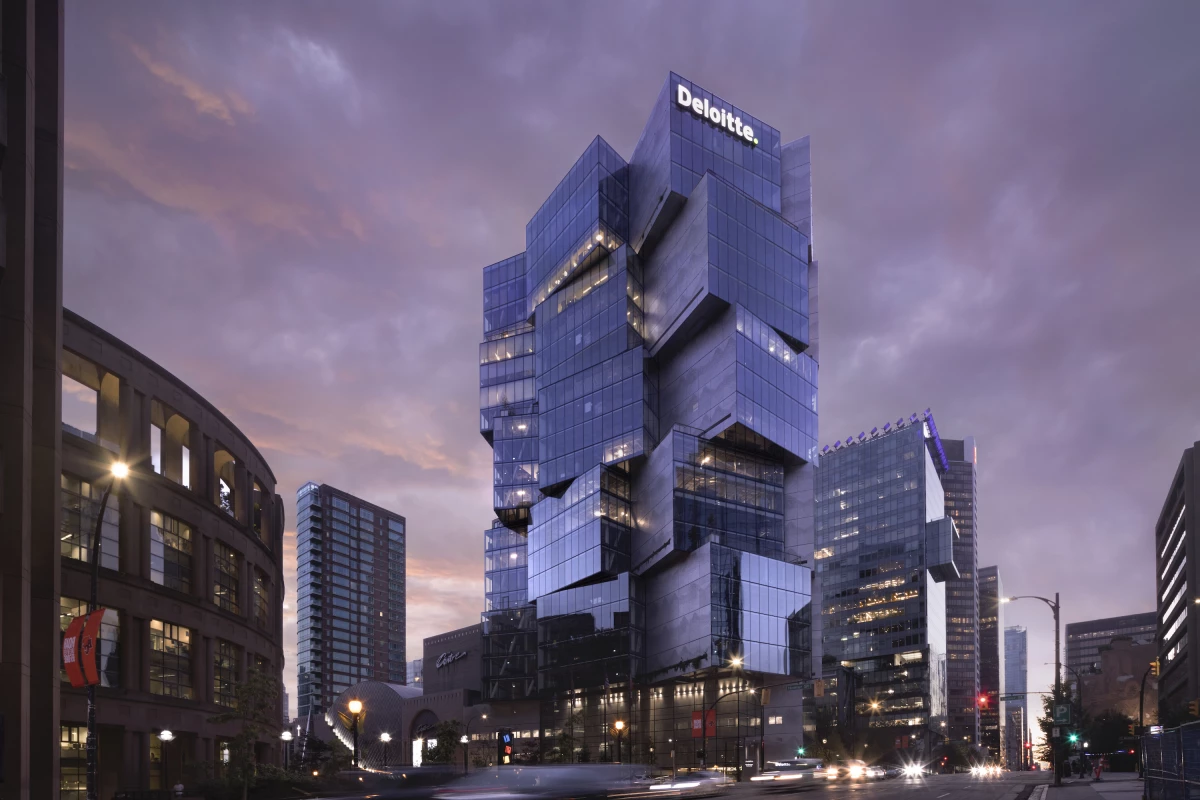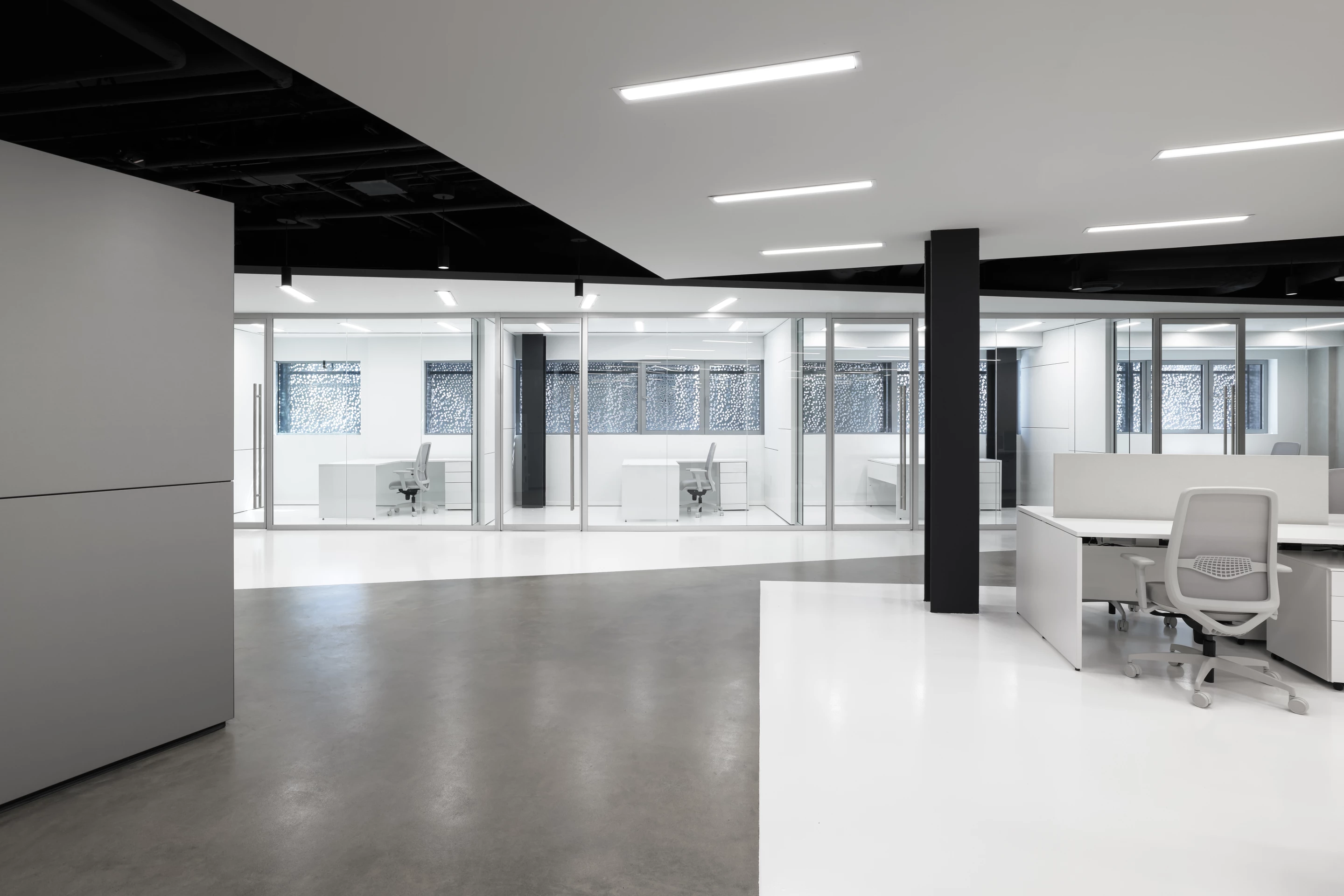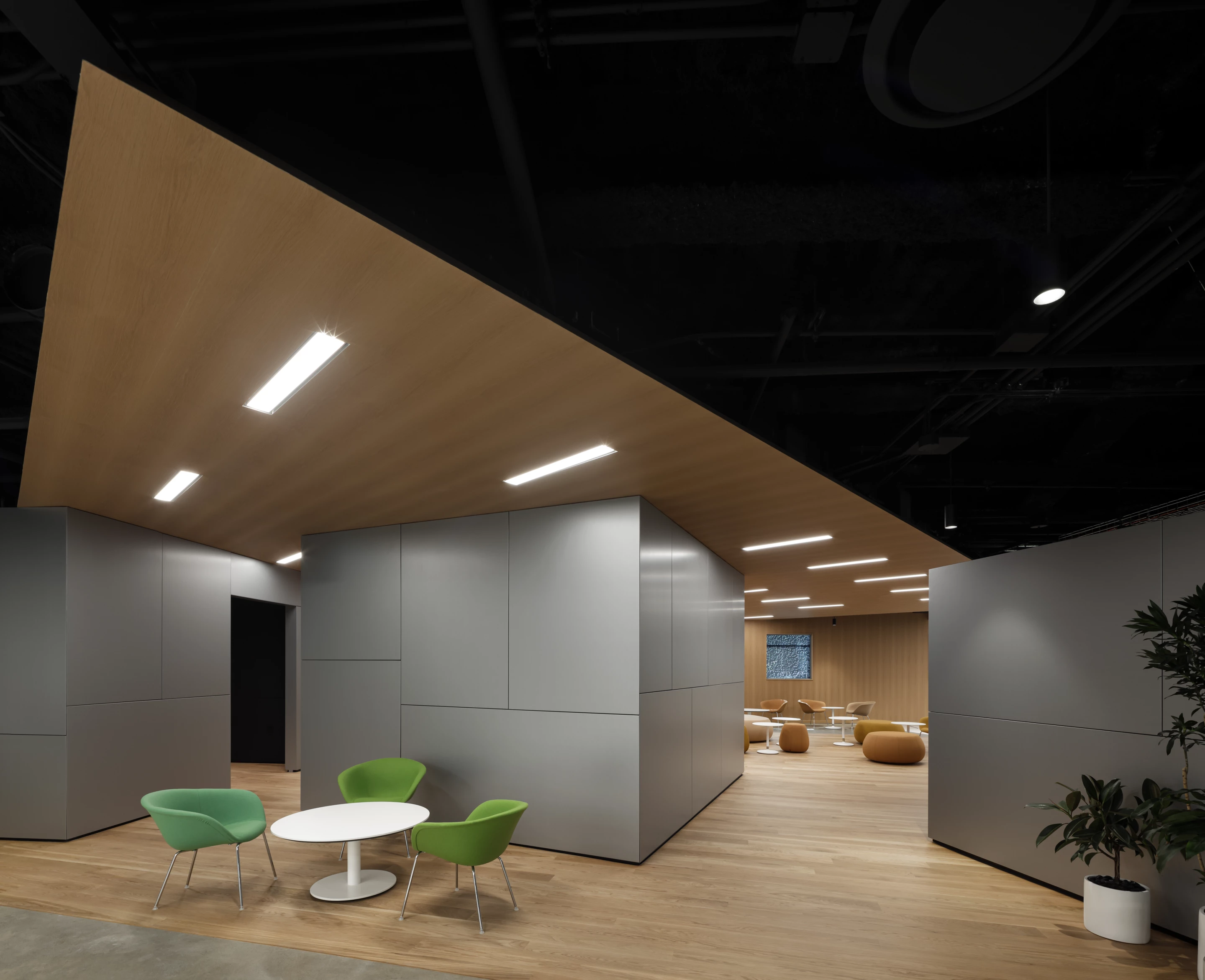Taking the form of a collection stacked glass cubes, Deloitte Summit, by OSO, offers a definite change from the rather humdrum rectangular towers that dot major cities worldwide. The eye-catching skyscraper rises to a height of 90 m (295 ft) in Vancouver, Canada, and its unusual form creates flexible office space and multiple outdoor terrace areas.
Designed in collaboration with Merrick Architecture, with landscaping by HAPA Collective, Deloitte Summit's unusual shape looks almost haphazard but follows a careful design to create an open and flexible interior. Structurally, the glass cubes are supported by a steel frame and are centered around a concrete core hosting the elevator and staircases.
"While the tower's shape and materiality create an impression of randomness, the underlying structure is based on simple rules," explained OSO. "The building's main element is the four-story high glass cube. Six of these cubes are grouped together around a central shaft to complete a floor. Overall, there are three main groupings (three typical floors) of which two are repeated. The glazing and paneling systems of the facade are based on a single module, and the structural system repeats itself throughout the building.
"The bulk of the building is held by a central elevator core and six 'mega-columns' that penetrate through all floors. There are no other columns in the center of the floorplate, only trusses along the facade that transfer perimeter loads from one cantilevering volume to another. Being mostly unobstructed by columns, the interiors feel wide and open. From the outside, the weightless quality of the building is enhanced by the lack of interlocking details where the boxes stack, creating and illusion of sliding volumes."

Deloitte Summit's interior measures 34,850 sq m (375,00 sq ft), which is spread over 24 floors and mostly given over to office space.
Though you can't really see any yet in the photos, significant greenery is planted on the multiple exterior terraces and will continue to grow over time. The skyscraper also boasts Vancouver's largest rooftop terrace, which has yet more greenery while offering excellent views of the surrounding mountains.
The project was commissioned by Canadian developer Westbank, which is the firm behind Kengo Kuma's upcoming Park Habitat. OSO and Westbank have also joined forces for another unusual project that's currently underway and will involve installing a Boeing 747 jet between two skyscrapers in Seattle.








